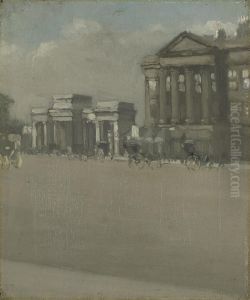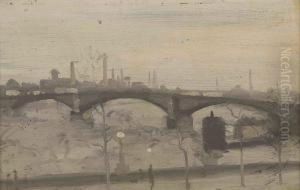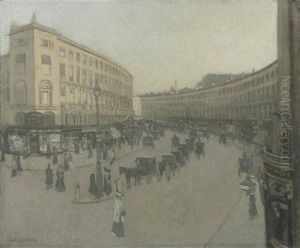William Evelyn Osbourne Paintings
William Evelyn Osbourne was an English painter known for his portraits and figure paintings. Born in 1868, he was active during the late Victorian and Edwardian periods, a time when British art was transitioning from the academic styles of the 19th century to the more modern approaches that would characterize the 20th century.
Osbourne studied art at the Royal Academy Schools in London, where he honed his skills in drawing and painting. He was part of a generation of artists who were exploring new techniques and subjects, often focusing on the depiction of everyday life and people. His works were characterized by a keen attention to detail, a refined use of color, and a commitment to realism, which was typical of the period.
Throughout his career, Osbourne exhibited at various prestigious venues, including the Royal Academy of Arts and the Paris Salon. His portraits often captured the likeness and personality of his subjects with great sensitivity and nuance, making him a sought-after portraitist among the social elite. Despite his talent and the recognition he received during his lifetime, Osbourne's career was relatively short, as he died at the young age of 38 in 1906.
Osbourne's paintings can be seen as a reflection of the transitional nature of British art at the turn of the century. Although he was not a radical innovator, his work contributed to the broader shifts in artistic focus and technique that were taking place at the time. After his death, like many artists of his era, he was somewhat overshadowed by the modernist movements that gained prominence in the following decades. Nevertheless, his works remain a testament to the skill and craftsmanship of late Victorian art and provide insight into the social and cultural milieu of his time.


